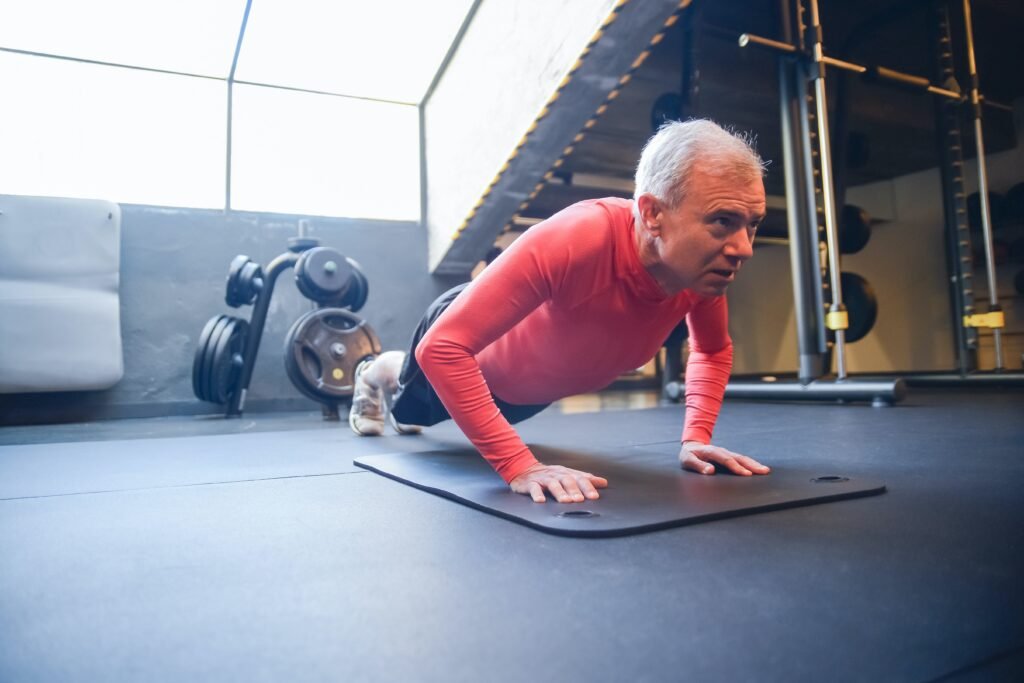Is age a barrier to physical fitness and well-being? Long answers short, research says no.
Contrary to conventional beliefs, research has shed light on the remarkable potential, even for individuals aged 90 and above, to enhance their muscle strength and the consequent quality of life through targeted strengthening exercises. In this article, we delve into the significance of strength training for the elderly, emphasizing the importance of health screening, professional guidance, and familial support in fostering a healthier and more active lifestyle for our elderly loved ones.
Unlocking the Potential:
Scientific studies have demonstrated that engaging in a well-designed strengthening exercise regimen, with appropriate load and volume, can significantly improve muscle strength and size, even for individuals in their 90s. This finding challenges the notion that age is an insurmountable obstacle to building or maintaining muscle mass. This improvement in muscle strength could translate to better balance ability and, thereby, faster walking speed and reduced need to use walking aids. By embracing strength training, elderly individuals can regain their independence, enhance mobility, and improve their overall quality of life.
Health Screening:
Before embarking on any exercise program, it is crucial for older adults to undergo a comprehensive health screening. This process helps rule out any red flags that render the elder unsuitable for training, as well as identify underlying health conditions to ensure that the prescribed exercises are appropriate for their specific needs. Consulting a physician or a physiotherapist can help tailor a safe and effective exercise routine.
Guidance from Physiotherapists:
To maximize the benefits of strength training, it is advisable for older adults to seek the guidance of a qualified physiotherapist. These professionals possess the knowledge and expertise to develop personalized exercise programs that align with the elder’s abilities and goals. They advise on the choice of exercises, progression of load and volume, and proper form and techniques, reducing the risk of injury and optimizing results.
The Power of Family Support:
While professional guidance is essential, support and encouragement from family members play a vital role in motivating older adults to engage in strength training. It is extremely crucial for us to be patient while the elder is making changes from a sedentary to an active lifestyle. Pre-existing illnesses, fatigue, soreness from exercises, self-doubt, etc., are all barriers which may make them hesitate to move – as we all know too well for ourselves too. Positive reinforcement and perhaps doing alongside them will go a long way in starting their engine and subsequently improving their quality of life.
Conclusion:
Age is not a barrier to physical improvement and vitality. The groundbreaking research highlighting the potential for muscle strength and size improvement in individuals above 90 years of age through strength training is a testament to the resilience and adaptability of the human body. By prioritizing health screening, seeking guidance from physiotherapists, and fostering familial support, we can empower our elderly loved ones to lead fulfilling lives and age gracefully. Let us help our parents grow old with strength, dignity, and independence through strength training and physical activities!
Reference:
- Fiatarone, M. A. (1990). High-Intensity Strength Training in Nonagenarians. JAMA, 263(22), 3029.
- Raymond, M.J. (2013). Systematic Review of High-Intensity Progressive Resistance Strength Training of the Lower Limb Compared With Other Intensities of Strength Training in Older Adults. Archives of Physical Medicine and Rehabilitation, 94(8), 1458-1472.
